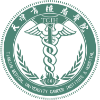Research ArticleOriginal Article
Heat shock protein 90 promotes RNA helicase DDX5 accumulation and exacerbates hepatocellular carcinoma by inhibiting autophagy
Ting Zhang, Xinrui Yang, Wanping Xu, Jing Wang, Dawei Wu, Zhixian Hong, Shengxian Yuan, Zhen Zeng, Xiaodong Jia, Shanshan Lu, Rifaat Safadi, Sen Han, Zhihong Yang, Leonard M. Neckers, Suthat Liangpunsakul, Weiping Zhou and Yinying Lu
Cancer Biology & Medicine August 2021, 18 (3) 693-704; DOI: https://doi.org/10.20892/j.issn.2095-3941.2020.0262
Ting Zhang
1Department of the Fifth Medical Center, General Hospital of PLA, Beijing 100039, China
2Division of Gastroenterology and Hepatology, Department of Medicine, Indiana University School of Medicine, Indianapolis 46202, USA
Xinrui Yang
1Department of the Fifth Medical Center, General Hospital of PLA, Beijing 100039, China
Wanping Xu
3Urologic Oncologic Branch, Center for Cancer Research, National Cancer Institute, Bethesda 20814, USA
Jing Wang
4State Key Laboratory of Toxicology and Medical Countermeasures, Beijing Institute of Pharmacology and Toxicology, Beijing 100039, China
Dawei Wu
1Department of the Fifth Medical Center, General Hospital of PLA, Beijing 100039, China
Zhixian Hong
1Department of the Fifth Medical Center, General Hospital of PLA, Beijing 100039, China
Shengxian Yuan
5The Third Department of Hepatic Surgery, Eastern Hepatobiliary Surgery Hospital, Shanghai 200438, China
Zhen Zeng
1Department of the Fifth Medical Center, General Hospital of PLA, Beijing 100039, China
Xiaodong Jia
1Department of the Fifth Medical Center, General Hospital of PLA, Beijing 100039, China
Shanshan Lu
1Department of the Fifth Medical Center, General Hospital of PLA, Beijing 100039, China
Rifaat Safadi
6Hadassah Medical Organization, Hadassah Hebrew University Medical Center, Jerusalem 9112001, Israel
Sen Han
2Division of Gastroenterology and Hepatology, Department of Medicine, Indiana University School of Medicine, Indianapolis 46202, USA
Zhihong Yang
2Division of Gastroenterology and Hepatology, Department of Medicine, Indiana University School of Medicine, Indianapolis 46202, USA
Leonard M. Neckers
4State Key Laboratory of Toxicology and Medical Countermeasures, Beijing Institute of Pharmacology and Toxicology, Beijing 100039, China
Suthat Liangpunsakul
2Division of Gastroenterology and Hepatology, Department of Medicine, Indiana University School of Medicine, Indianapolis 46202, USA
7Department of Biochemistry and Molecular Biology, Indiana University School of Medicine, Indianapolis 46202, USA
Weiping Zhou
5The Third Department of Hepatic Surgery, Eastern Hepatobiliary Surgery Hospital, Shanghai 200438, China
Yinying Lu
1Department of the Fifth Medical Center, General Hospital of PLA, Beijing 100039, China
8Center for Synthetic and Systems Biology (CSSB), Tsinghua University, Beijing 100085, China

References
- 1.↵
- Llovet JM,
- Zucman-Rossi J,
- Pikarsky E,
- Sangro B,
- Schwartz M,
- Sherman M, et al.
- 2.↵
- 3.↵
- 4.↵
- 5.↵
- Wang CY,
- Li S.
- 6.↵
- Jarmoskaite I,
- Russell R.
- 7.↵
- 8.↵
- 9.↵
- 10.↵
- Wortham NC,
- Ahamed E,
- Nicol SM,
- Thomas RS,
- Periyasamy M,
- Jiang J, et al.
- 11.↵
- Yang L,
- Lin C,
- Liu ZR.
- 12.↵
- 13.↵
- 14.↵
- 15.↵
- Pierce BG,
- Wiehe K,
- Hwang H,
- Kim BH,
- Vreven T,
- Weng Z.
- 16.↵
- Tomayko MM,
- Reynolds CP.
- 17.↵
- Bansal H,
- Bansal S,
- Rao M,
- Foley KP,
- Sang J,
- Proia DA, et al.
- 18.↵
- 19.
- Wu Y,
- Huang B,
- Liu Q,
- Liu Y.
- 20.
- Pick E,
- Kluger Y,
- Giltnane JM,
- Moeder C,
- Camp RL,
- Rimm DL, et al.
- 21.↵
- Wang C,
- Zhang Y,
- Guo K,
- Wang N,
- Jin H,
- Liu Y, et al.
- 22.↵
- 23.↵
- 24.↵
- Qing G,
- Yan P,
- Xiao G.
- 25.↵
- 26.↵
- Imai J,
- Maruya M,
- Yashiroda H,
- Yahara I,
- Tanaka K.
- 27.↵
- 28.↵
- 29.↵
- Kim J,
- Kundu M,
- Viollet B,
- Guan KL.
- 30.↵
- 31.↵
- Yang CM,
- Ji S,
- Li Y,
- Fu LY,
- Jiang T,
- Meng FD.
- 32.↵
- Valenta T,
- Hausmann G,
- Basler K.
- 33.↵
- Kuroda T,
- Rabkin SD,
- Martuza RL.
- 34.↵
- Staal FJ,
- van Noort M,
- Strous GJ,
- Clevers HC.
- 35.↵
- 36.↵
- Chiosis G,
- Timaul MN,
- Lucas B,
- Munster PN,
- Zheng FF,
- Sepp-Lorenzino L, et al.
- 37.↵
- Blagg BS,
- Kerr TD.
- 38.↵
- Zimmer A,
- Amar-Farkash S,
- Danon T,
- Alon U.
- 39.↵
- 40.↵
- Xiao CZ,
- Wei W,
- Guo ZX,
- Zhang MY,
- Zhang YF,
- Wang JH, et al.
In this issue
Heat shock protein 90 promotes RNA helicase DDX5 accumulation and exacerbates hepatocellular carcinoma by inhibiting autophagy
Ting Zhang, Xinrui Yang, Wanping Xu, Jing Wang, Dawei Wu, Zhixian Hong, Shengxian Yuan, Zhen Zeng, Xiaodong Jia, Shanshan Lu, Rifaat Safadi, Sen Han, Zhihong Yang, Leonard M. Neckers, Suthat Liangpunsakul, Weiping Zhou, Yinying Lu
Cancer Biology & Medicine Aug 2021, 18 (3) 693-704; DOI: 10.20892/j.issn.2095-3941.2020.0262
Heat shock protein 90 promotes RNA helicase DDX5 accumulation and exacerbates hepatocellular carcinoma by inhibiting autophagy
Ting Zhang, Xinrui Yang, Wanping Xu, Jing Wang, Dawei Wu, Zhixian Hong, Shengxian Yuan, Zhen Zeng, Xiaodong Jia, Shanshan Lu, Rifaat Safadi, Sen Han, Zhihong Yang, Leonard M. Neckers, Suthat Liangpunsakul, Weiping Zhou, Yinying Lu
Cancer Biology & Medicine Aug 2021, 18 (3) 693-704; DOI: 10.20892/j.issn.2095-3941.2020.0262
Jump to section
Related Articles
- No related articles found.
Cited By...
- No citing articles found.










